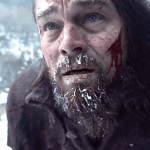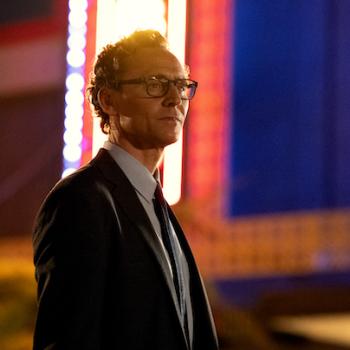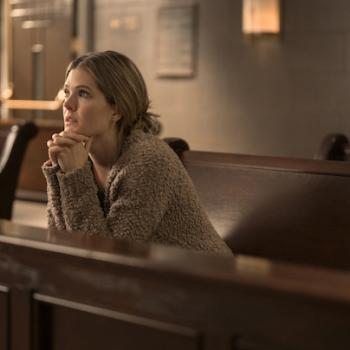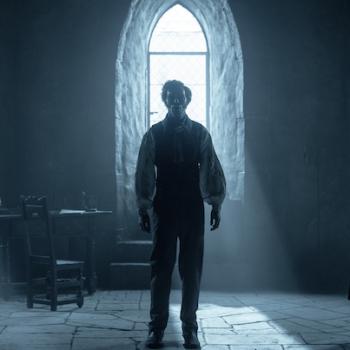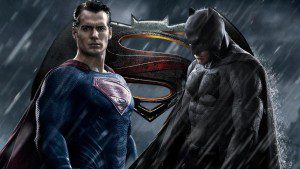
Batman v. Superman: Dawn of Justice will be rolling out to theaters later this month. But before the movie even lands in the local cineplex, there’s already buzz about what’ll be on the home video release: A big letter R.
According to ew.com, the “Ultimate Edition” of the movie will bear an R rating when it rolls out on DVD and Blu-Ray. Wolverine 3, due about this time next year, will also be shooting for an R. Many speculate that this could just be the beginning of a new wave of R-rated superhero stories. So prevalent is this sudden push for restricted ratings that Ant-Man director Peyton Reed suggested cheekily that this could be only the beginning. “Breaking: ANT-MAN AND THE WASP is going FULL NC-17,” he tweeted.
Some superhero fans, primed by the runaway success of the R-rated Deadpool, are excited to see superheroes go in a harsher, grittier, bloodier direction.
Don’t count me among them.
Don’t misunderstand me. I’m all for a bit of grit in my superhero stories. I wrote a book on the spirituality of Batman, based largely on Christopher Nolan’s darkly terrific Dark Knight trilogy. I’m eagerly awaiting the premiere of Daredevil’s second season on Netflix—a show that walks the line between PG-13 and R. Even Captain America—as straight-laced a superhero as there is—seems to have gotten deeper as his movies have gotten darker.
But when moviemakers push these superheroes into ever more depressing landscapes, I think we risk losing what made them so super to begin with.
Every culture has its myths and legends, be they religious or secular, featuring brave and powerful heroes and heroines who fight for what that culture holds dear. Often these stories had a hint of history in them, but whether they were historical or not was really, in a sense, beside the point. These stories linked generations together and helped give shape to society. And as such, they were often designed to teach younger listeners something about the world and how they should behave within it.
Granted, the characters in these stories were often far from perfect—indeed, they often behaved quite imperfectly—there’s still an aspirational flavor to them. The Greeks had their Iliad and Odyssey and their pantheon of heroes. The English had King Arthur and his knights. And for more than 80 years now, America has had its superheroes.
Like many of their mythic predecessors, our superheroes are often demigods, graced with powers and skills unattainable to folks like us. And they, like Achilles and Lancelot, have their share of flaws.
And from the moment of their inception, they were made for kids. Back in the 1930s and ‘40s, comics weren’t the province of fortysomething guys wanting to add to their collection. Children bought them, saving their nickels to take home Superman’s latest adventures, or reading about the Fantastic Four in the corner drugstore.
Sure, I understand that comics don’t fit that mold anymore. According to a survey by DC (the folks behind Superman and Batman), 64 percent of comic-book buyers are between the ages of 35 and 64. Deadpool, who first appeared in 1991, was never a kiddie comic-book character. And as I’ve mentioned, there’s an upside with even traditional superheroes growing grittier and more complex.
But you don’t adult content to tell a mature story. You can add grit without adding dirt, and excellence does not require f-words.
And while comic books might be the providence of adults these days, the superheroes themselves—the Supermans, Batmans, even, I’d wager, the Wolverines—are still very much embraced by children.
Take a spin through the big box store, and you’ll find legions of superheroes stocking the shelves where kids tend to gather. X-Men action figures. Iron Man birthday streamers. Captain America lunchboxes. LEGO became the biggest toy company in the world, in part, by peddling superhero sets to legions of children and tweens.
Even now, when we talk about the influence of superheroes on the culture, we understand the innate moral authority that these (admittedly flawed) characters bring to the table. They teach us lessons (“With great power comes great responsibility,” Spider-Man tells us). They serve as symbols (For years, superhero fans thought it was a crime that Wonder Woman had been so spurned by Hollywood: Girls, they said, needed to see a female superhero on screen.) At their best, they serve as role models. Even Batman, the poster boy for flawed superherodom, suggests that there’s light and hope that can be found even in a dark, dark world. That’s a message that all of us could stand to hear.
Heroes, even in today’s culture, mean something—especially to children. And it seems that, when we make their worlds too dark or make the heroes too adult, We lose their ability to reach the audience that arguably needs them the most. And we’re not doing just a disservice to kids. We’re doing a disservice to the superheroes themselves.


